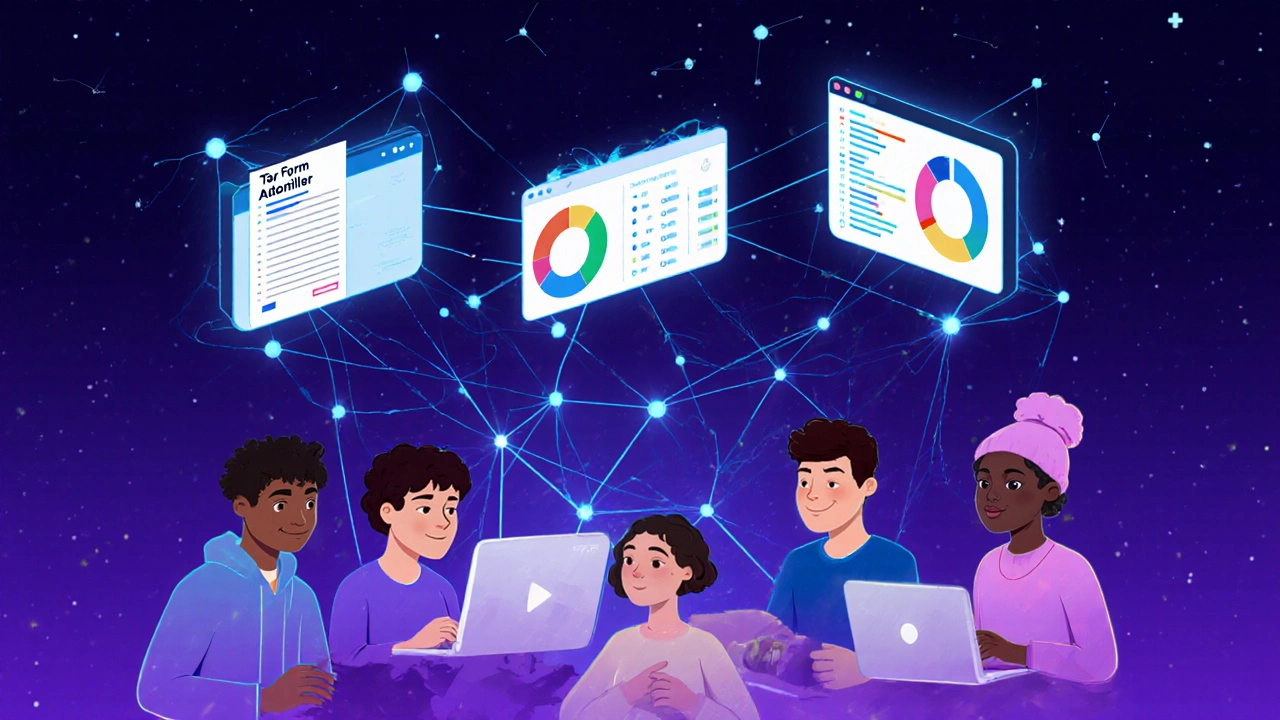Every month, someone asks: Do self-taught coders get hired? The answer isn’t yes or no-it’s more like, ‘It depends, but here’s how you make it work.’ In 2025, companies aren’t asking for diplomas at the door. They’re asking for code that works, problems that get solved, and the grit to keep learning.
What hiring managers actually look for
Forget the myth that you need a computer science degree to land a job. A 2024 Stack Overflow survey showed that 42% of professional developers in the U.S. and Europe are entirely self-taught. At companies like Google, Apple, and IBM, you won’t even see a degree requirement on many junior developer listings anymore. Instead, they’re scanning GitHub profiles, asking for live coding samples, and testing problem-solving speed.
One hiring manager at a fintech startup in Austin told me bluntly: ‘I don’t care where you learned. I care if you can debug a broken API by 10 a.m. and explain why it broke.’ That’s the new standard.
The real barrier isn’t learning-it’s showing your work
Self-taught coders often spend months learning JavaScript, Python, or React-but then sit quietly, waiting for someone to notice them. That doesn’t work. Employers don’t find you. You have to make yourself visible.
- Build three real projects. Not ‘to-do lists’ or ‘calculator apps.’ Build something that solves a real problem: a tool that auto-schedules dentist appointments for seniors, a dashboard that tracks local air quality using public data, or a browser extension that blocks clickbait on news sites.
- Host them on GitHub. Clean code matters. So does a good README. Write like you’re explaining it to a friend who knows nothing about code.
- Deploy one project live. Use Netlify, Vercel, or Render. A live link beats a ZIP file every time.
One 19-year-old from rural Ohio got hired at a remote SaaS company after posting a simple Chrome extension that auto-filled tax forms for freelancers. He didn’t go to college. He didn’t do a bootcamp. He just solved a problem he’d lived through.
Bootcamps vs self-taught: who gets hired faster?
Bootcamps promise job placement. Self-taught learners promise freedom. But who actually lands jobs quicker?
Here’s what the data shows:
| Path | Average time to first job | Median starting salary (U.S.) | Employer type most common |
|---|---|---|---|
| Self-taught (with portfolio) | 6-9 months | $68,000 | Startups, remote-first companies |
| Bootcamp graduate | 3-5 months | $72,000 | Mid-sized tech firms, agencies |
| CS degree holder | 4-7 months | $75,000 | Large corporations, finance, government |
Bootcamps give you structure, mentorship, and sometimes job guarantees. But they cost $10,000-$20,000. Self-taught learners save money but need more discipline. Neither path is ‘better.’ The winner is the one who ships code consistently.

What skills actually matter in 2025
Here’s the cold truth: employers don’t care if you know the difference between ‘let’ and ‘const’ in JavaScript. They care if you can:
- Read error messages and fix them without Googling for 3 hours
- Use version control (Git) like a native language
- Break down a vague request like ‘make the site faster’ into actual steps
- Ask smart questions instead of guessing
- Write code that other people can understand six months later
These aren’t taught in textbooks. They’re learned by doing-messing up, fixing, and doing it again.
One developer shared that his first real job interview lasted 90 minutes. Half of it was him explaining how he debugged a broken payment API on his own project. The other half was him asking the interviewer, ‘What’s the biggest tech debt your team is dealing with?’ That question got him the offer.
How to get your first interview without a resume
Your resume doesn’t need to say ‘B.S. Computer Science.’ It needs to say:
- ‘Built X tool that helped Y users solve Z problem’
- ‘Reduced page load time by 40% using lazy loading and image optimization’
- ‘Contributed to open-source project X, fixed bug in Y module’
Some self-taught coders skip resumes entirely. They send a link to their GitHub and a 2-minute Loom video walking through their best project. That’s more convincing than a two-page Word doc listing ‘proficient in Python.’
Companies like Automattic (WordPress) and GitLab hire mostly without resumes. They use coding challenges and live pair programming sessions instead. If you can code with someone in real time, explain your choices, and adapt to feedback-you’re already ahead of 80% of applicants.

Where to look for jobs (and where not to)
Don’t waste time applying to big corporate job boards like Indeed or LinkedIn for junior roles. Too many applicants. Too many degree filters.
Instead, try these:
- AngelList - Filter for ‘no degree required’ startups
- RemoteOK - Many remote-first companies don’t care about diplomas
- GitHub Jobs - Developers post jobs here. They know what matters
- Twitter/X and Mastodon - Follow #100Devs, #LearnToCode, #CodeNewbie. People hire from these communities
- Local meetups - Even virtual ones. Talk to people. Say ‘I’m building X. Can I show you?’
One coder landed a job after commenting on a developer’s tweet about a bug in their open-source tool. He fixed it, sent a pull request, and the founder hired him a week later.
What holds self-taught coders back
The biggest problem isn’t skill. It’s mindset.
- Waiting for permission - ‘I’ll apply when I know more.’ No one ever feels ‘ready.’
- Comparing yourself to CS grads - They learned theory. You learned how to ship. Different strengths.
- Ignoring soft skills - Communication, asking for help, admitting when you’re stuck-these matter more than memorizing algorithms.
Self-taught coders often think they need to be ‘as good as’ a degree holder. They don’t. They need to be different-and that’s an advantage.
Final truth: You don’t need to be perfect. You need to be persistent.
There’s no magic formula. No secret course. Just this: build something every week. Share it. Get feedback. Fix it. Repeat.
Companies hire people who solve problems-not people who passed exams.
If you’ve spent 100 hours coding, you’re already ahead of 90% of the people who say they want to be developers.
Now go build something that matters-and then show it to someone.
Can I get hired without a computer science degree?
Yes. In 2025, over 40% of professional developers don’t have a CS degree. Employers care more about your code, problem-solving, and ability to learn than your diploma. Build a strong portfolio, contribute to open-source, and show real results.
How long does it take self-taught coders to get hired?
On average, it takes 6 to 9 months for self-taught coders to land their first job-but only if they’re actively building and sharing work. Those who build one real project every month get hired faster than those who spend a year learning without shipping anything.
Are bootcamps worth the money?
Bootcamps can speed up your journey by giving you structure, mentorship, and job support. But they’re not required. Many self-taught coders earn the same salaries without spending $15,000. If you’re disciplined and can find free resources, you can skip the cost.
What’s the best first project for a self-taught coder?
Build something that solves a problem you’ve actually experienced. Examples: a tool that auto-saves your browser tabs, a budget tracker that syncs with your bank, or a website that organizes your favorite YouTube tutorials. Real problems = real skills = real interest from employers.
Do I need to know algorithms and data structures?
For junior roles, not deeply. You need to understand basic concepts like arrays, loops, and functions. But you don’t need to memorize Big O notation or implement a binary search tree from scratch. Focus on building, debugging, and collaborating. Save advanced algorithms for later.
Can I get hired remotely as a self-taught coder?
Yes-often easier than landing a local job. Remote-first companies prioritize skills over location and credentials. Sites like RemoteOK, We Work Remotely, and AngelList are full of opportunities. Build in public, share your progress, and you’ll attract remote offers.
Start today. Build something small. Share it. Then build something bigger. That’s the path.
